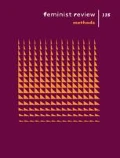Jafari S. Allen, Duke University Press, Durham and London, 2011, 241+xiipp., ISBN: 978-0-8223-4950-1 (Pbk), $84.95 (Hbk)/$23.95 (Pbk)
If the Cuban Revolution of 1959 marked a watershed in the country’s history, inspiring countless scholarly studies of socialism on the Caribbean’s largest island, the demise of the Soviet Union after 1990 brought about an almost equally dramatic change. The subsequent era of emergency economic measures (labelled the ‘Special Period of Times in Peace’) has likewise prompted a steady stream of research documenting the myriad ways in which Cubans’ daily lives, choices and desires have been shaped by what Jafari Sinclair Allen, in this engaging ethnography, calls Cuba’s ‘re-globalization’. The book’s title, ¡Venceremos? (‘We Shall/Shall We Triumph!?’), is an allusion to Che Guevara’s iconic phrase, ‘Until Victory, Forever!’, and a nod to the popular Cuban expression for survival in post-Soviet circumstances: luchar, to struggle. Allen expands our knowledge of contemporary Cuban life through a detailed study of the relationship between desire and race among black Cubans living largely ‘at the margins’ (p. 89) (hip hop artists and fans, sex workers, gay men and lesbians, transgender people, and artists) in the country’s two largest cities, Havana and Santiago de Cuba.
Inspired by Audre Lorde, the book explores multiple constructions of ‘erotic subjectivity’ (p. 3) in sites visited by the author during four years of ethnographic research: semiprivate queer parties; HIV education and activism; hip hop parties; lesbian social and political networks; commercial sex; and informal transnational black consciousness networks (pp. 5–6). In addition to the ‘thick description’ (p. 6) of the field, close readings of key Cuban academic texts, music, art and film provide the book’s critical and historical framework.
In the best tradition of reflexive anthropology, Allen writes himself—as a researcher, but also as a friend and fellow traveller—into his analysis. In Chapter 1, for example, he employs the work of Frantz Fanon, as well as his own experience as an African-American man walking the streets of Havana, to qualify classic European studies by Henri de Certeau on space and Walter Benjamin on the flaneur, complicating common assumptions about the anthropologist as a privileged holder of the gaze. The same chapter makes effective use of Louis Althusser’s concept of interpellation to show how not only the Cuban police, but also foreign tourists, racialise, gender, class and sexualise Cubans through their calls, looks and occupations of space. Chapter 2, which turns to the intersections of race, sex and gender in Cuban history, critiques Fernando Ortiz’s influential ethnography of Afro-Cubans and ‘folklore’, through an innovative reading of his classic study Cuban Counterpoint.
The book is nonetheless most impressive in its analysis of the daily practices of black Cuban ‘erotic self-making’. Chapter 3 introduces the tranformista (tranvestite) Octavio/Lili, showing how their imagination of womanhood ‘reflects sex/gender/race ideology promulgated through popular culture over three hundred years’ (p. 78). The same chapter reviews the work of black women writers, film-makers and poets, interventions that could be understood as part of a black feminist tradition, even if the word ‘feminist’ is not often used among Cuban women. Allen’s readings of Lorde and other women of colour make the case that understandings of ‘queer’ Cuba necessitate an engagement with feminism, and specifically feminism of colour, in addition to the writings of the usual (white, male) suspects of high queer theory. Michel Foucault is here, then, in the epigraph to Chapter 5 on friendship, even though Allen reminds us that ‘he arrived late, and only after black feminist theorists and creative writers had imagined erotic friendship among black women’ (p. 131).
The case of ‘feminism’ (a word seen historically by some Cuban women, including in the official Federation of Cuban Women, as an imperialist, capitalist import) highlights one of the challenges of any study of contemporary Cuba by an outsider: to transmit an understanding of complex Cuban realities and fantasies in ways accessible to a foreign audience, without imposing an unfamiliar framework of analysis on the socialist country. Allen is careful and clever in his use of theory to bridge this often-daunting gap. He respects Cuban specificity while pointing out the fallacy of the socialist Cuba/capitalist America binary. Shared histories of slavery and racism provide excellent ground for highlighting the similarities and differences between the two countries. In Chapter 4, Allen compares the notorious ‘culture of poverty’ thesis used to criminalise African-American families to the ways in which black Cuban men continue to be constructed as ‘deviant’. ‘Despite their antinomy’, he writes, ‘there are in fact profound and wide links between Cuban Marxist-Leninist ideology and United States (neo) liberalism’ (p. 107). The connection is even stronger if we recall the influential work of American ethnographer Oscar Lewis, who helped to popularise the term ‘culture of poverty’ in his studies of shantytowns in Mexico and Puerto Rico, and later conducted oral history in Cuba.
Notwithstanding his valid criticisms of the shortcomings of the Cuban socialism—criticisms reflected in the growing activism among women, queer and black Cubans in the past decade—Allen highlights the significant gains of the Revolution, not least for women of all class and racial groups. But the persistence of what he calls ‘heteropatriarchy’ signals both a missing ‘gender/sexual revolution’ and a ‘failure of political imagination’ (p. 113). In contrast, though black Cubans living at the margins of sexual and gender normativity lack many of the material resources taken for granted in the global north, lack imagination they do not. ¡Venceremos? strongly suggests that the future of Cuba’s now-fragile Revolution depends not in small part on the freedom of that creative spirit.
Author information
Authors and Affiliations
Rights and permissions
About this article
Cite this article
Hamilton, C. ¡venceremos? the erotics of black self-making in Cuba. Fem Rev 106, e3–e5 (2014). https://doi.org/10.1057/fr.2013.31
Published:
Issue Date:
DOI: https://doi.org/10.1057/fr.2013.31

